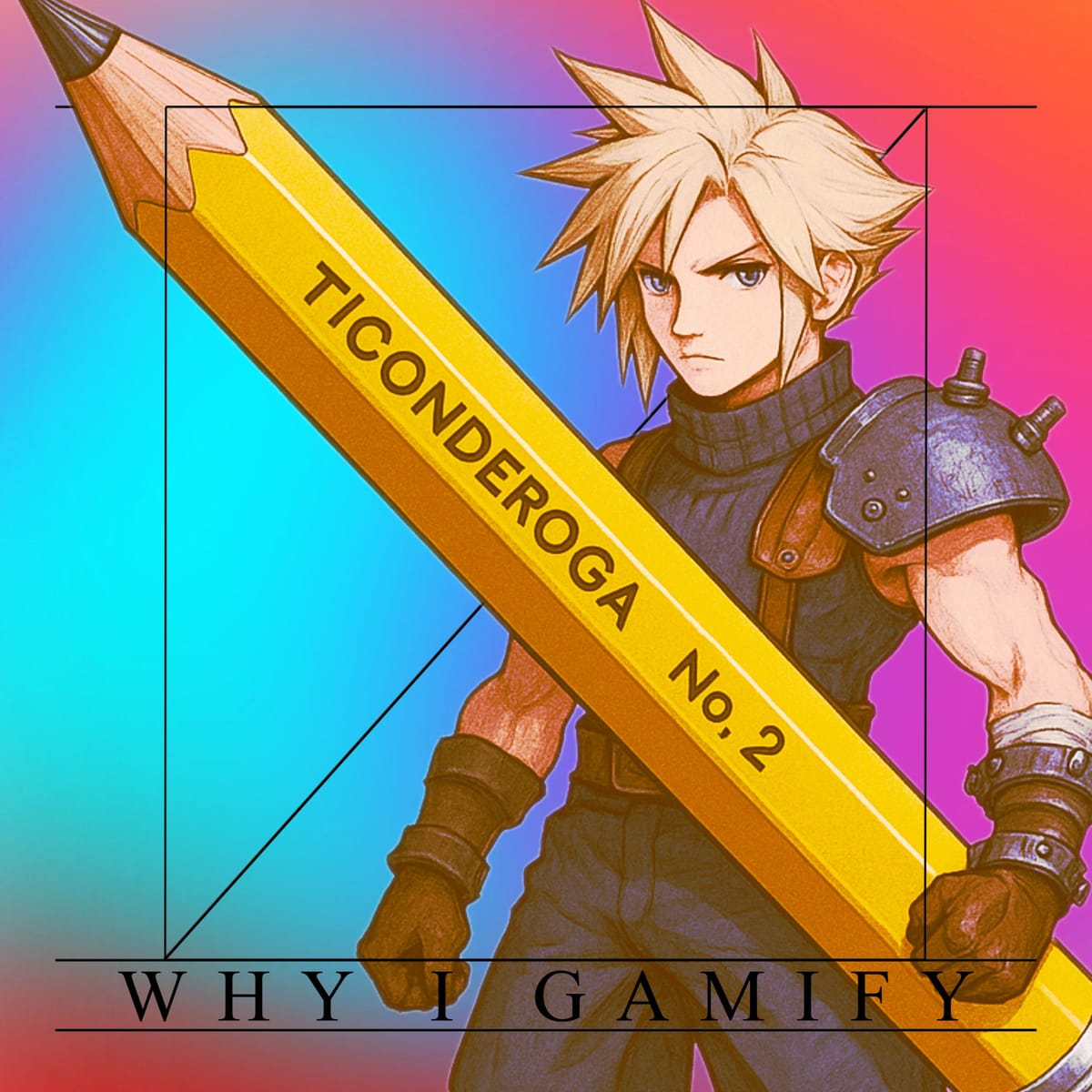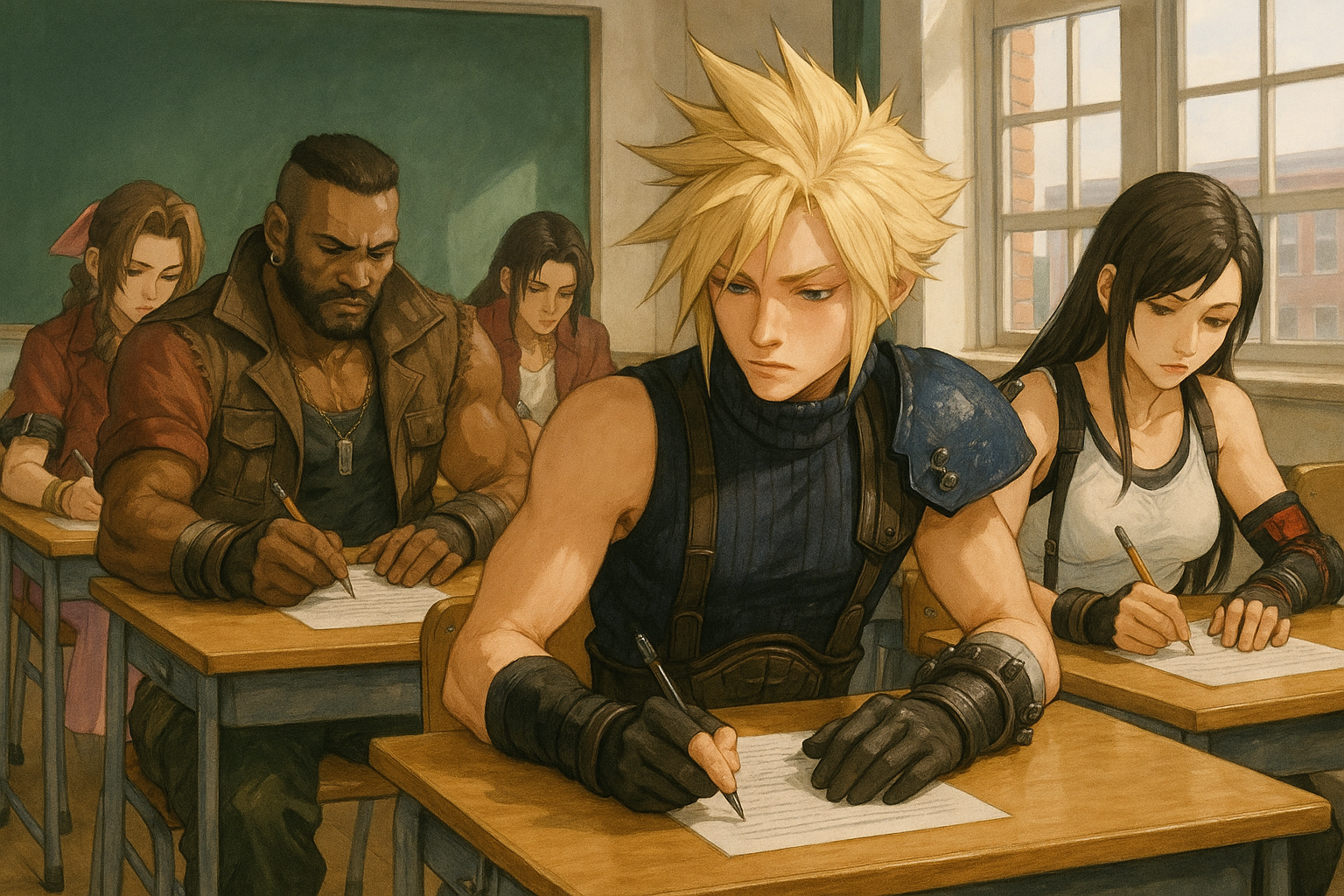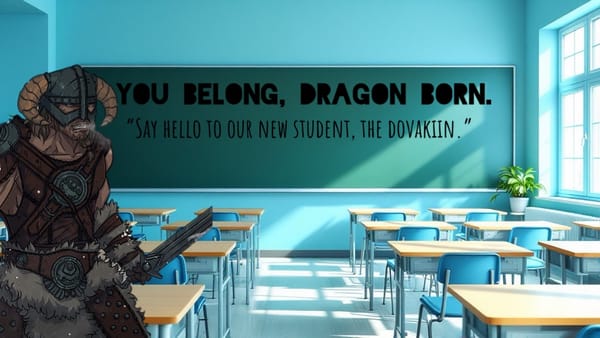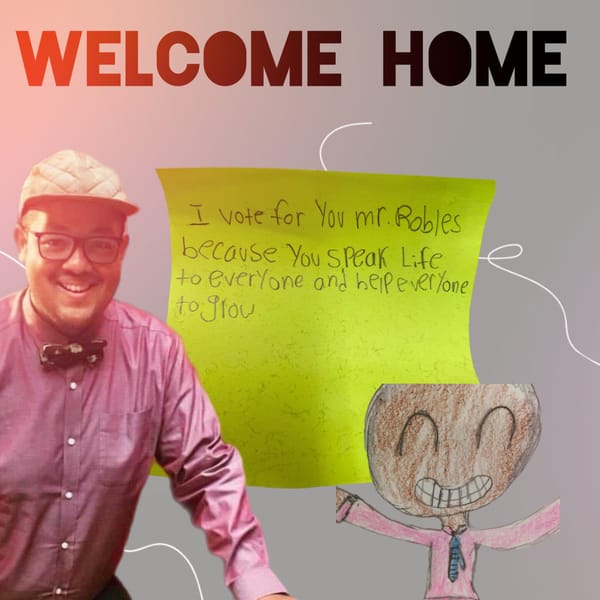Why I Gamify
I gamify because games taught me what school forgot: failure is the doorway to mastery, struggle unlocks our Limit Breaks, and every child deserves a classroom where revival is always possible.

Or rather: Why I Gamify as an Abolitionist
A Universal Design for Loving — Entry #3
① Opening Vignette: Where Cloud Strife Met My Classroom
I was fourteen when Cloud Strife first taught me about resilience.
Every afternoon after school, I’d sink into the glowing world of Final Fantasy VII—chasing Sephiroth across continents, leveling up my rag-tag team through forests and frozen craters, grinding through random encounters to earn enough AP to master my materia. I remember the way the music swelled before a boss fight, Nobuo Uematsu conducting my teen heartbeat. I remember sweating through my controller as I triggered a Limit Break at the last possible second, watching Cloud swing that impossibly huge Buster Sword and turn certain defeat into a breathtaking victory.
And I remember the Chocobos, those charming, lovable birds. I bred, raced, and raised them like my life depended on it. Why? Because I believed, truly believed, that if I worked hard enough, cared deeply enough, and kept showing up, I could cross any mountain, any ocean, any hidden cave.
And then I would go to school.

In school, a single mistake was a catastrophe. One low quiz could derail your grade. Falling behind wasn’t a side quest; it became your identity. No XP. No leveling. No do-overs. No “keep grinding until you get stronger.”
We forced kids into systems that punished failure while letting video games teach them that failure is the doorway to mastery.
Even as a ninth grader, I knew something was backwards.
② The Lesson: Why Gamification Is an Abolitionist Practice
I gamify because games have always understood something schools keep forgetting: humans learn best when our dignity is intact.
Gamification is not points, prizes, or dopamine tricks. It’s a profound pedagogical reorientation toward what games understand about being human:
- We crave belonging (guilds, parties, teams).
- We crave agency (choose your class, build your skill tree).
- We crave visible growth (XP, meters, evolution screens).
- We crave meaningful struggle (boss fights worth fighting).
- We crave story (why we do the work).
When I gamify as an abolitionist, I do it because the traditional structures of school: grading, compliance, public ranking, punishment, disposability, mirror the very oppressive systems our students must one day challenge.
Games show us another way.
In Final Fantasy VII, nobody punishes Cloud for not knowing Fire3 yet. You grind. You learn. You grow.
When Aerith gets knocked out in a fight, the game doesn’t label her “below grade level.” You revive her. You keep going together.
I gamify to build classrooms where revival is normal.
Abolitionist teaching is the belief that no child is disposable. Gamification, aligned with abolition, becomes the architecture of this belief. XP systems reward persistence, not perfection. Narrative arcs reframe struggle as purpose. Limit Break mechanics remind students they carry power inside them that is activated precisely when life gets hard.
And this is the thing: students who give up on essays will go home and die fifty times in a game and still keep playing.
Why?
Because the game respects their humanity.
It gives them feedback, not judgment.
Progress, not punishment.
Choice, not coercion.
Imagine what happens when classrooms do the same.
③ The Practice: How I Bring Final Fantasy Into a Loving, Abolitionist Classroom
Here’s how I bring that FFVII fire into my Humanities 7 room:
1. XP Instead of Grades (Cloud’s Growth Meters)
- Every assignment earns XP toward Writer Level, Historian Level, or Guild Rank.
- XP is never lost; it only accumulates.
- Students get a “Level Up Screen” each Friday with:
- new skills unlocked
- what XP pushed them over the threshold
- what quests they’ve completed
Script:
“Every line you wrote earned you XP. You’re growing because you’re trying, not because you’re perfect.”
2. Guilds as Parties (Like Cloud, Tifa, Barret, Yuffie)
Students belong to writing guilds: Loreweavers, Quillblades, Inkshadows, and Inkscribes.
Each guild has:
- roles (Strategist, Guardian of Time, Spiritkeeper)
- a shared XP bank
- Limit Break rituals (more below)
Restorative Guild Question:
“How do we revive each other when someone in our party is struggling?”
3. Limit Breaks (Activated by Struggle)
Inspired by FFVII:
When students face something hard, an essay meltdown, a conflict, a moment of overwhelm, they earn a Limit Break Token.
They can cash it in for:
- Sitting in my office
- Curating our Classroom Playlist
- Reserving the big, green comfy chair in the corner of our classroom
- Or a handful of Mr. Robles’s own Cheddar Pop-corners
Teacher Script:
“Struggle doesn’t mean you’re failing. It means your Limit Break is charging.”
4. Materia = Skill Trees
Students choose “materia orbs” to invest in for the unit:
- Fire Materia = Claim Writing
- Ice Materia = Evidence Selection
- Heal Materia = Revising with Care
- Lightning Materia = Sentence Craft
Leveling a materia means demonstrating mastery on CER mini-tasks.
CER Mini-Task:
- Claim: Sephiroth symbolizes the danger of unchecked power.
- Possible evidence (pick 1):
- His destruction of Nibelheim
- His manipulation of Cloud
- His pursuit of the Black Materia
- Reasoning: Shows how power without compassion leads to harm.
5. Chocobo-Style Side Quests
Students unlock joyful side quests:
- “Raise Your Chocobo” journal routine
- “Race Day” timed vocabulary duels
- “Forest of Forgotten Drafts” where they rescue old writing
Kids adore side quests because they feel optional, playful—yet deeply meaningful.
④ Closing : A Prophetic Love Letter to Teachers
I gamify because love demands creativity.
Because children deserve more than a system that sorts them. They deserve a world that invites them. They deserve classrooms where they are not passengers but protagonists.
I gamify because Final Fantasy VII taught me this simple truth long before pedagogy did:
When humans believe their effort matters, they rise.
When they see their progress, they persist.
When they belong to a party, they fight for each other.
When their struggle unlocks power instead of punishment, they become unbreakable.
Abolitionist teaching means designing spaces where no one gets left behind in the crater, where revival is always an option, where the story keeps unfolding for every child, even the ones who were told they’d never be heroes.
And if Cloud, a spiky-haired mercenary with a Buster Sword, taught my younger self anything, it’s this:
every child is carrying a Limit Break the world hasn’t seen yet.
May we build classrooms where they learn to use it with courage, compassion, and joy.
Because every child deserves a classroom designed for loving.




